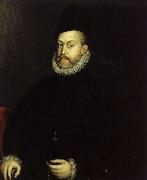Wholesale Oil Painting No Minimum |
|||||||||||
|
|
|||||||||||

|
|||||||||||
|
|
|
||||||||
anguissola sofonisbaThe best known of the sisters, she was trained, with Elena, by Campi and Gatti. Most of Vasari's account of his visit to the Anguissola family is devoted to Sofonisba, about whom he wrote: 'Anguissola has shown greater application and better grace than any other woman of our age in her endeavours at drawing; she has thus succeeded not only in drawing, colouring and painting from nature, and copying excellently from others, but by herself has created rare and very beautiful paintings'. Sofonisba's privileged background was unusual among woman artists of the 16th century, most of whom, like Lavinia Fontana (see FONTANA (ii),(2)), FEDE GALIZIA and Barbara Longhi (see LONGHI (i), (3)), were daughters of painters. Her social class did not, however, enable her to transcend the constraints of her sex. Without the possibility of studying anatomy, or drawing from life, she could not undertake the complex multi-figure compositions required for large-scale religious or history paintings. She turned instead to the models accessible to her, exploring a new type of portraiture with sitters in informal domestic settings. The influence of Campi, whose reputation was based on portraiture, is evident in her early works, such as the Self-portrait (Florence, Uffizi). Her work was allied to the worldly tradition of Cremona, much influenced by the art of Parma and Mantua, in which even religious works were imbued with extreme delicacy and charm. From Gatti she seems to have absorbed elements reminiscent of Correggio, beginning a trend that became marked in Cremonese painting of the late 16th century. This new direction is reflected in Lucia, Minerva and Europa Anguissola Playing Chess (1555; Poznan, N. Mus.) in which portraiture merges into a quasi-genre scene, a characteristic derived from Brescian models. |
||||||||
|
|
||||||||
filip ii av spanien med gyllene skinnets ordenstecken
filip ii av spanien med gyllene skinnets ordenstecken Painting ID:: 56470 |
mk248 anguissolas liu uid det spanska bouet inleddes 1559, da bon intntroducerdes som en mycket framstaende konstnar. under sin karrar malade anguissola nabga portratt i balufigur. mk248 anguissolas liu uid det spanska bouet inleddes 1559, da bon intntroducerdes som en mycket framstaende konstnar. under sin karrar malade anguissola nabga portratt i balufigur. |
|||||||
|
CONTACT US |

